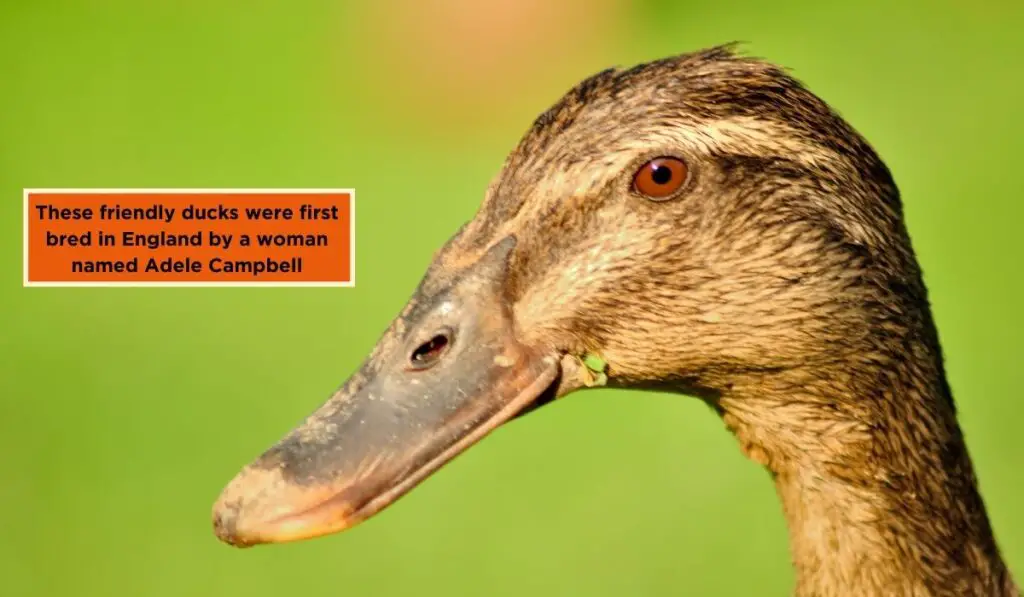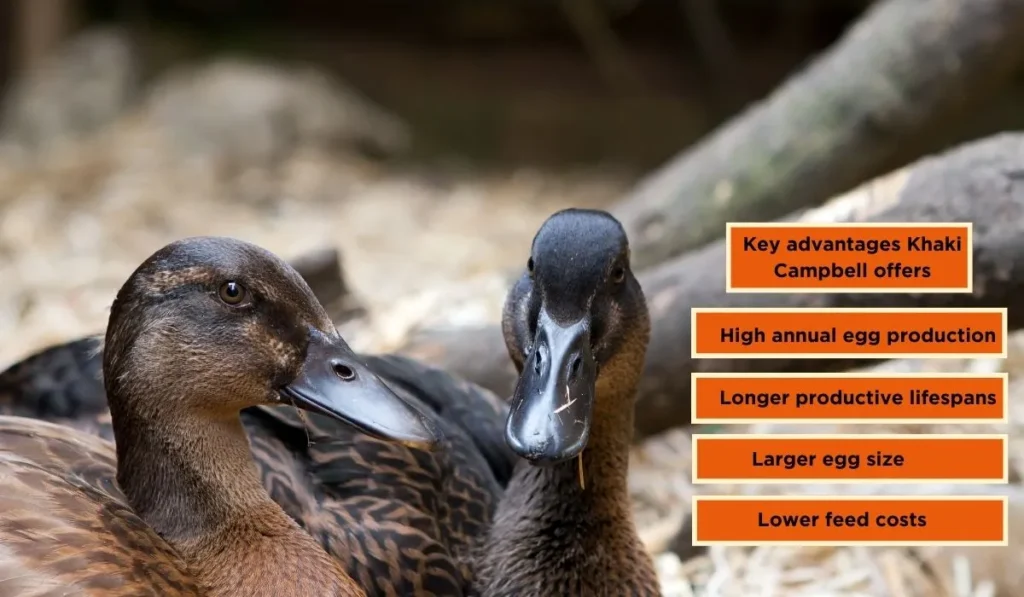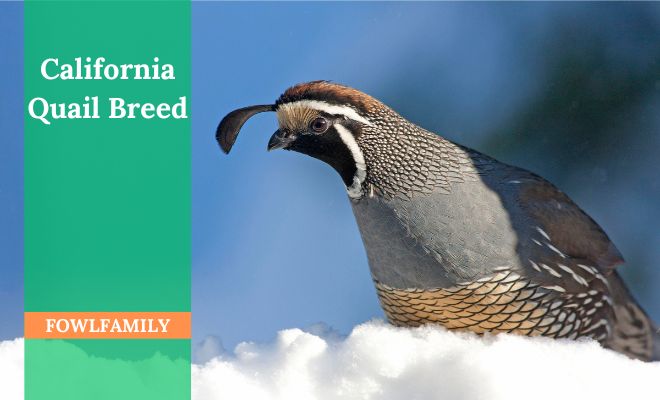
The Khaki Campbell duck breed is iconic because of the egg production! But other than that, they are fascinating and have an amazing history. Being one of the oldest British duck breeds, they have gone through so many breed tryings and all that.
Their distinctive appearance, personality, and suitability are what sets them apart from other duck breeds across the world. This article will have all the things about the Khaki Campbell.
Plus, we’ll cover some interesting facts and FAQs to help you become more knowledgeable on Khaki Campbell. So, keep on going, mate!
Table of Contents
Khaki Campbell Duck Breed Profile in A Nutshell

Before jumping into them, let’s have a quick overview of Khaki Campbell and everything about them.
| Scientific Name | Anas platyrhynchos domesticus |
| Order | Anserinas |
| Origin | England |
| Family | Anatidae |
| Subspecies | Domesticated |
| Varieties | None |
| Purpose | Laying eggs |
| Distribution | Worldwide |
| Lifespan | 10-15 years |
| Adaptability | Good |
Historical Timeframe of the Great Khaki Campbell Duck Breed
The Khaki Campbell duck we know today traces its roots back to the late 1800s. These friendly ducks were first bred in England by a woman named Adele Campbell.
Adele crossed a male Rouen duck with a female Indian Runner (a lean duck known for laying lots of eggs).
This mix produced ducklings with the best traits of both breeds. It’s like a pleasant personality from the Rouen and high egg production from the Indian Runner.
The ducklings had a tan plumage that resembled the khaki fabric used in military uniforms. So Adele named her creation the Khaki Campbell duck!
Later on, Khaki Campbells were bred again with Penciled Runners to reinforce their prolific egg-laying abilities. Through careful breeding over many generations, the ideal Khaki Campbell duck was developed.
Related Read: Indian Runner Ducks 101
Physical Appearance of the Khaki Campbells
Khaki Campbell ducks are known for their distinctive appearance, which sets them apart from other breeds.
But do male and female Khaki Campbells have different appearances?
Yes, they do have. Let’s look at the appearance of a male and a female Campbells.
Khaki Campbell Drakes
Typically larger than females, with a weight range of 3-4 pounds (1.4-1.8 kg). They have bright khaki-colored plumage with a greenish sheen. Also, a darker khaki color on their backs and a lighter color on their bellies are noticeable. A white stripe runs across their forehead, which is thought to resemble a mustache. Also, they have a distinctive purple sheen on their tail feathers, a yellow beak, and legs.
Female Khaki Campbells
Generally smaller than males, with a weight range of 2-3 pounds (0.9-1.4 kg). They also have a white stripe that runs across their forehead, but it is not as pronounced as in males. They have a brown or yellow beak and legs.
It’s worth noting that the color of Khaki Campbell ducks can vary depending on the lighting and the individual bird’s feathers. They generally have a distinctive greenish or bluish sheen to their plumage, which sets them apart from other breeds.
Khaki Campbell Duck Breed: Characteristics Analysis

Khaki Campbell ducks are well-known for their friendly and inquisitive temperament. These ducks are social animals that enjoy interacting with their caretakers as well as other ducks.
Are Khaki Campbell Good Foragers?
Khaki Campbell ducks are highly skilled at foraging. That means they are adept at finding their own food either in the wild or in a domestic setting.
How Good are Khaki Campbells As a New Comer?
Khaki Campbell ducks can be skittish or nervous in unfamiliar surroundings. They may take some time to become acclimated to their new environment. However, this behavior is common in many animal species and should not be cause for concern.
Protective Mating And Reproduction Behavior of the Khaki Campbell Duck Breed

The khaki Campbell duck (Anas platyrhynchos domesticus) is a prolific egg-laying domesticated duck species. The breeding season typically varies from early Spring through Summer.
They Pair, And Mate
Once paired, they will mate repeatedly over the course of several months. Female ducks usually build nests on the ground in dense vegetation or reeds near the shoreline of bodies of water. Nests are constructed from grasses, leaves, sticks, and down feathers plucked from the female’s breast.
Khaki Campbells are Protective Over Their Hatchings
Clutch sizes range from 8-15 eggs, which are deposited at a rate of about one per day. Incubation lasts 28 days and is performed exclusively by the female duck while the male stands guard. Somewhat uniquely among poultry, khaki campbell drakes actively participate in defending and caring for hatchlings.
Sexual Maturity Comes Within 6 Months
Newly hatched ducklings are able to swim and feed themselves immediately but remain under the care and supervision of their parents for 8-10 weeks until fully developed and independent. Sexual maturity is reached at around 7 months of age, at which point the annual reproductive cycle begins anew.
Why are Khaki Campbells Called Champion of Egg Production?
Okay, so let’s talk cold hard cash and Khaki Campbells. They’re incredible egg layers, and here’s how they make a bet.
Khaki Campbells lay around 300 eggs a year, which is even more than chickens! These ducks keep laying eggs for 2-3 years, while chickens usually lay for just 1-2 years. Cool, eh!? Their eggs, a lovely brown color and a nice size, are in demand as well!
Each duck can sell around 250 eggs annually, making about 60 cents per egg in bulk. So, every duck brings in around $150 from their eggs. After covering duckling and food costs, the owner profits about $100-$120 yearly from each duck.
So, Khaki Campbells end up making more money in the long run. Although not a big deal for meat, their consistent egg-laying makes them a top choice for egg farmers.
Is Khaki Campbell Good for Meat Production? Not really!
Nah, Khaki Campbell ducks aren’t raised for meat production. Their bodies just don’t get as plump and meaty as breeds like Pekins or Rouens. Khaki Campbells only weigh about 5 pounds fully grown, versus 9-10 pounds for meat duck breeds.
Their meat is also considered less tasty than other ducks. These ducks put all their energy into poppin’ out eggs, not building meat.
Business Value Analysis – 4 Key Advantages!

Khaki Campbell ducks are an ideal investment for egg farmers looking to maximize productivity and profits. This hardy duck breed is renowned for its exceptional egg-laying capabilities compared to chickens or other duck varieties.
4 key advantages Khaki Campbell offers:
1. High annual egg production
They average just 250-275 eggs annually. This gives ducks an 18-20% higher output.
2. Longer productive lifespans
Khaki Campbell ducks remain highly productive for a couple of years. Extended high yields from Khaki Campbells improve return on investment.
3. Larger egg size
Eggs weigh 58-62 grams on average. Large size commands higher market prices than smaller chicken eggs.
4. Lower feed costs
Ducks are efficient converters of feed to eggs. Feed costs average $0.17 per duck daily.
Clearly, Khaki Campbells offer significant advantages in productivity and profitability over chickens for commercial egg farmers.
For anyone looking to maximize both egg output and return on investment, Khaki Campbell ducks are a brilliant choice.
Are Khaki Campbells Suitable for Backyard? Certainly Yes!
Indeed. Khaki Campbell ducks are well-suited for backyard flocks due to their small size and hardy, adaptable nature. They do not require extensive space and can thrive in small pens or enclosures.
However, proper housing and fencing should be installed to protect Khaki Campbell ducks from common predators like foxes, coyotes, raccoons, and dogs.
Their enclosure should also provide adequate shelter from extreme weather conditions.
Here’s a well-explained video on why Khaki Campbell is absolutely suitable for backyard raising:
What Should I Feed Khaki Campbells?
Khaki Campbells are not picky eaters. Their diet should consist of commercial duck feed, grains, vegetables, fruits, and proteins. Clean, fresh water must be available at all times.
With appropriate space, housing, fencing, nutrition, and protection from predators, they can be productive and enjoyable for backyard duck enthusiasts. Their high egg production and friendly personalities make them an ideal backyard duck breed.
Cons of Raising Khaki Campbells In Backyard
There are some concerns if you want to raise some Khaki Campbells in your backyard. These include:
- They feel uneasy in new living conditions. So, you may have to wait a couple of days for them to feel relaxed.
- Khaki Campbell ducks require regular care and attention, including daily feeding, watering, and cleaning of their enclosure.
- They are vulnerable to predators such as foxes, coyotes, and hawks, making it important to provide a secure enclosure.
- Khaki Campbell duck breed is known to make noise, especially in the early morning and late evening hours, said experienced duck raisers.
Recommended Readings:
- Silver Appleyard Duck Breed
- Raising Aylesbury Duck Breed
- Everything About Welsh Harlequin Duck
- Black And White Magpie Duck
Summary of the Study
In close, the Khaki Campbell duck breed is indeed a wonderful choice for any backyard or small farm. With their friendly and gentle nature, high egg production, and adaptability, they make a great addition to any flock.
However, it’s important to be aware of their potential cons, such as skittishness and susceptibility to predators. Overall, with proper care and attention, Khaki Campbell ducks can bring joy and eggs to any duck enthusiast!
Sources and References:
- https://www.fao.org/3/n4338e/N4338E09.htm
- https://www.sciencedirect.com/topics/agricultural-and-biological-sciences/khaki-campbell






